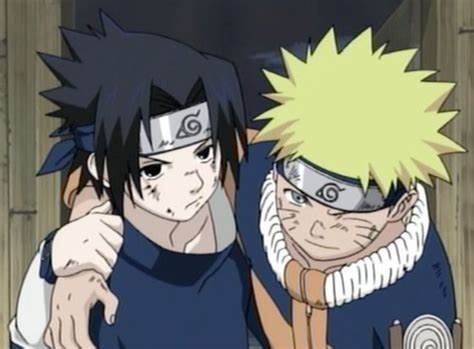Writing a Friendship to Enemies Arc
The Journey from Friends to Enemies: Naruto and Sasuke's Tragic Rivalry
Few relationships in anime are as complex and emotionally charged as the bond between Naruto Uzumaki and Sasuke Uchiha in Naruto. Their journey from close friends to bitter enemies is a masterclass in storytelling, showcasing the nuances of friendship, ambition, and the destructive power of vengeance. The slow transition from camaraderie to conflict is built on a foundation of shared pain, diverging goals, and misunderstandings. This article examines how their relationship evolved, the pivotal moments in their descent into hostility, and tips for writers seeking to craft similar journeys in their stories.
A Bond Forged in Loneliness
Naruto and Sasuke’s friendship is rooted in shared experiences of loneliness and loss. Both characters grew up as outcasts: Naruto was ostracized due to being the host of the Nine-Tails, and Sasuke was burdened by the trauma of losing his clan in the Uchiha massacre. Though their personalities clashed—Naruto’s loud and boisterous nature contrasted with Sasuke’s quiet stoicism—their shared pain created an unspoken bond.
As members of Team 7, their friendship deepened through missions and battles. Naruto’s unrelenting determination to be acknowledged and Sasuke’s quest for power was opposing yet complementary traits that drove them to push each other. However, cracks in their relationship began to appear as their goals diverged. While Naruto sought to strengthen their bond, Sasuke became increasingly consumed by his desire for revenge against his brother, Itachi, and his pursuit of greater power.
The Slow Descent into Rivalry
The transition from friends to enemies was gradual and heartbreaking, marked by key moments that highlighted their growing divide:
The Chunin Exams (Episodes 20-67): During the Chunin Exams, Sasuke’s inferiority complex was exacerbated by witnessing Naruto’s rapid growth and the overwhelming power of opponents like Gaara and Orochimaru. These events planted the seeds of doubt in Sasuke’s mind, pushing him to question whether staying in Konoha would allow him to achieve his goals.
The Curse Mark and Orochimaru’s Influence: Orochimaru’s gift of the Curse Mark during the Forest of Death represented the physical manifestation of Sasuke’s internal struggle. The mark symbolises both the temptation of power and Sasuke’s willingness to forsake bonds to achieve his revenge.
The Valley of the End (Episodes 128-135): The culmination of their initial conflict occurred in the Valley of the End. Sasuke’s decision to leave Konoha to train under Orochimaru forced Naruto to confront the painful reality that their paths had irreparably diverged. The emotional battle highlighted their ideological differences: Naruto believed in the strength of bonds, while Sasuke viewed them as chains holding him back.
Moments of Realization: Friends Turned Foes
Both Naruto and Sasuke experienced moments of painful clarity, where they recognized the inevitability of their clash:
Naruto’s Perspective: Naruto realized during their battle at the Valley of the End that Sasuke’s descent into darkness was driven by pain and that saving him might mean fighting him. This moment crystallized Naruto’s resolve to bring Sasuke back, even if it meant enduring years of struggle.
Sasuke’s Perspective: For Sasuke, the decision to sever ties with Naruto and the rest of Konoha was not made lightly. He acknowledged that staying would mean compromising his ambition, and he viewed their bond as a weakness he had to overcome to grow stronger.
These realizations added depth to their conflict. Both characters knew that their battle was inevitable, but their motivations made the fight tragic rather than purely antagonistic.
From Rivals to Redemption
While Naruto and Sasuke’s rivalry is a central conflict throughout the series, their story also exemplifies the potential for reconciliation. After years of battles and self-discovery, their final clash at the Valley of the End (Episodes 476-478 in Naruto Shippuden) marks the turning point. Both characters, now adults, confront the consequences of their choices. Sasuke’s eventual redemption is made possible by Naruto’s unwavering belief in their bond, completing their journey from friends to enemies and, ultimately, back to allies.
Tips for Writers Crafting Friends-to-Enemies Arcs
The Naruto-Sasuke relationship provides valuable insights for writers looking to craft similar arcs in their stories. Here are some tips:
Start with a Strong Foundation: For the betrayal to feel impactful, establish a deep and meaningful friendship. Show the characters supporting and inspiring each other, so the audience invests in their bond.
Create Diverging Goals: Introduce external and internal forces that pull the characters in opposite directions. For Naruto and Sasuke, the desire for revenge and the pursuit of bonds were inherently at odds, creating natural tension.
Show the Gradual Shift: Avoid rushing the transition from friends to enemies. Highlight the small moments of misunderstanding, jealousy, or temptation that slowly drive a wedge between the characters.
Provide Both Perspectives: To make the conflict nuanced, ensure that both characters’ motivations are clear and sympathetic. Show how their decisions, while flawed, stem from relatable desires or fears.
Include Moments of Reflection: Let the characters acknowledge the pain of their broken bond. These moments humanize them and make the conflict more emotionally resonant.
Build to a Climactic Confrontation: A friends-to-enemies arc often culminates in a battle or confrontation. Use this moment to explore the themes of the story and the characters’ growth.
Leave Room for Redemption: Even if the story doesn’t end with reconciliation, hint at the possibility of forgiveness or understanding. This adds emotional depth and leaves a lasting impression on the audience.
Naruto and Sasuke’s journey from friends to enemies is a masterfully crafted tale of conflict and reconciliation. By showcasing their deep bond, gradual divergence, and eventual clash, the writers created a narrative that resonated with audiences on an emotional level. For writers, their story offers a blueprint for crafting friends-to-enemies arcs that are as heartbreaking as they are compelling, blending tension, emotion, and the hope for redemption


